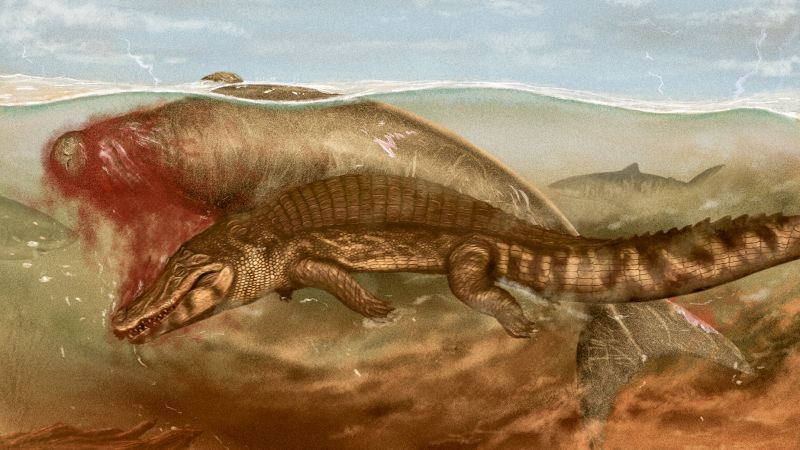Prehistoric Sea Cow's Unlucky End: Fossilised Remains Reveal Croc and Shark Attack

A remarkable fossil discovery has shed light on the unfortunate demise of a prehistoric sea cow, revealing a brutal encounter with two formidable predators.
The fossilised remains of the extinct dugong species, belonging to the Culebratherium group, were unearthed in Venezuela. Analysis of the skeleton, dating back approximately 15 million years to the early to middle Miocene Epoch, revealed a chilling scene of the animal's final moments.
The sea cow's partial skull and 13 vertebrae bear distinct bite marks, suggesting a two-part attack. According to the study published in the Journal of Vertebrate Paleontology, a crocodile-like creature, likely a caiman or gharial, was the initial aggressor. Deep tooth impressions on the sea cow's snout, alongside large, curved incisions, indicate the crocodile attempted to suffocate its prey before dragging it through the water, tearing its flesh.
Striations and slashing patterns on the fossil are consistent with the crocodile's characteristic "death roll" technique, where the animal spins its prey to subdue it.
The tiger shark's role in the gruesome event is evident from bite marks throughout the sea cow's body, as well as a single, isolated tooth lodged in its neck. The shark's distinctive narrow, non-serrated teeth suggest it scavenged on the sea cow's carcass after the crocodile's attack.
Lead researcher Aldo Benites-Palomino, a doctoral student at the University of Zurich, described the challenges of differentiating between predatory and scavenging behaviour. He likened the meticulous examination of the fossil to the work of a forensic scientist.
While the study provides compelling evidence of the dual-predator attack, other scenarios for the sea cow's death cannot be entirely ruled out, as highlighted by paleontologist Dean Lomax from the University of Bristol and University of Manchester. Lomax, who was not involved in the research, suggests the possibility of the sea cow dying from other causes and later being scavenged by the crocodile and shark.
Regardless of the exact sequence of events, the fossil offers an unprecedented glimpse into the ancient food chain. The sea cow's size â up to 5 meters in length â and its fatty tissue would have made it a tempting target for predators.
The study's authors emphasise the significance of this discovery for expanding our understanding of prehistoric life in South America, highlighting the value of exploring new fossil sites beyond well-established locations in North America and China. They believe this unique fossil find underscores the rich palaeontological potential of South America, promising further insights into the region's ancient past.





